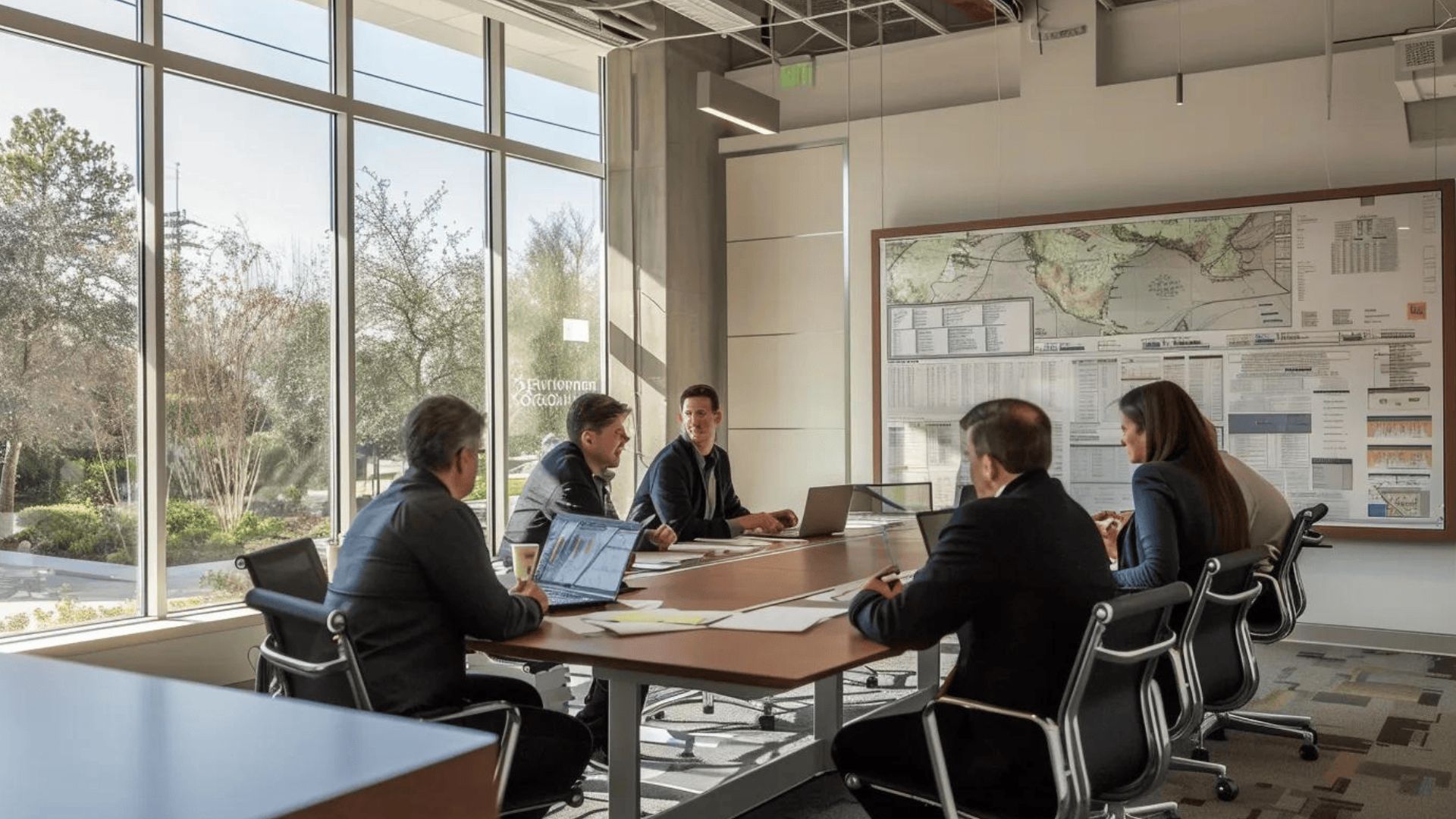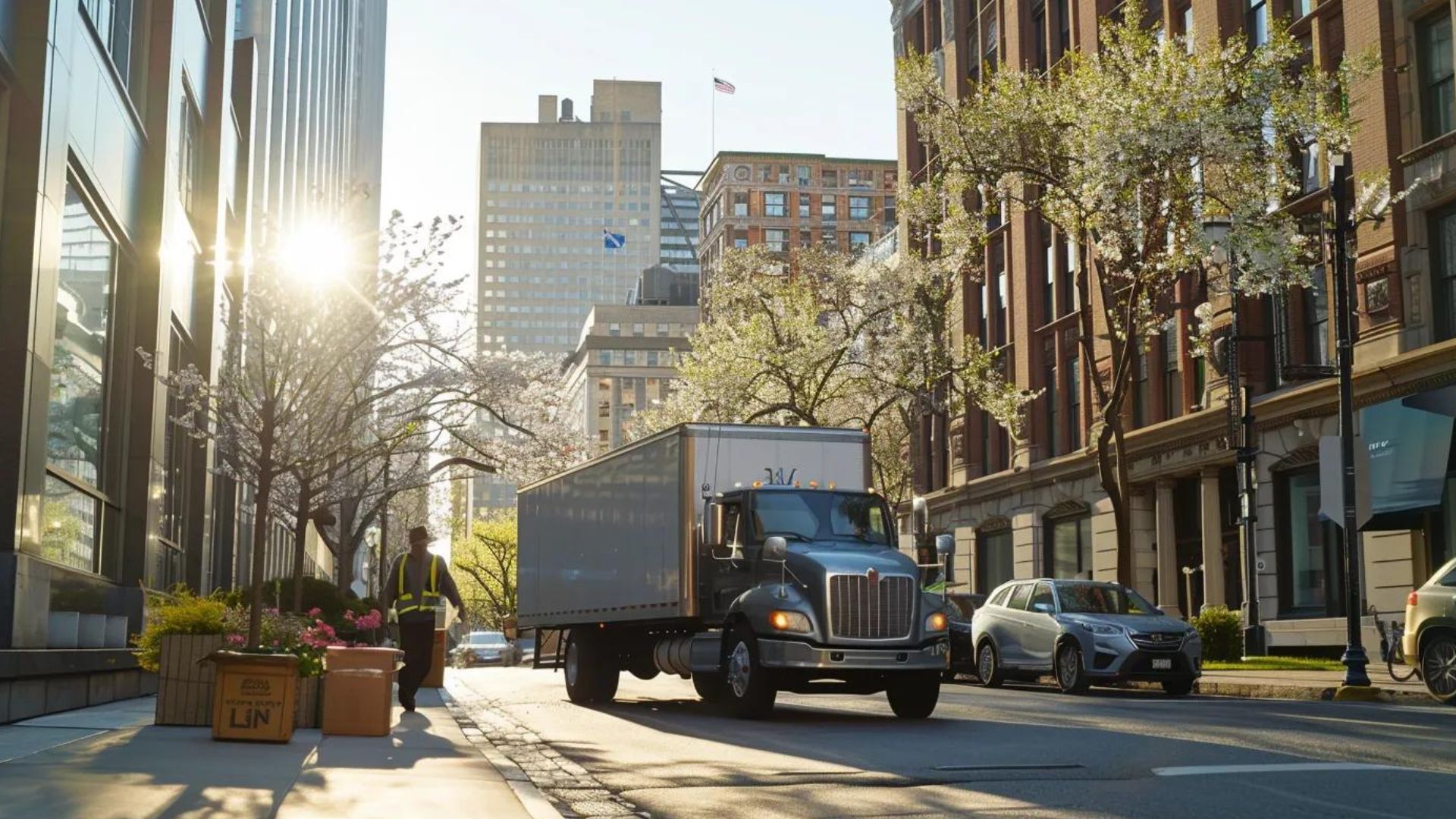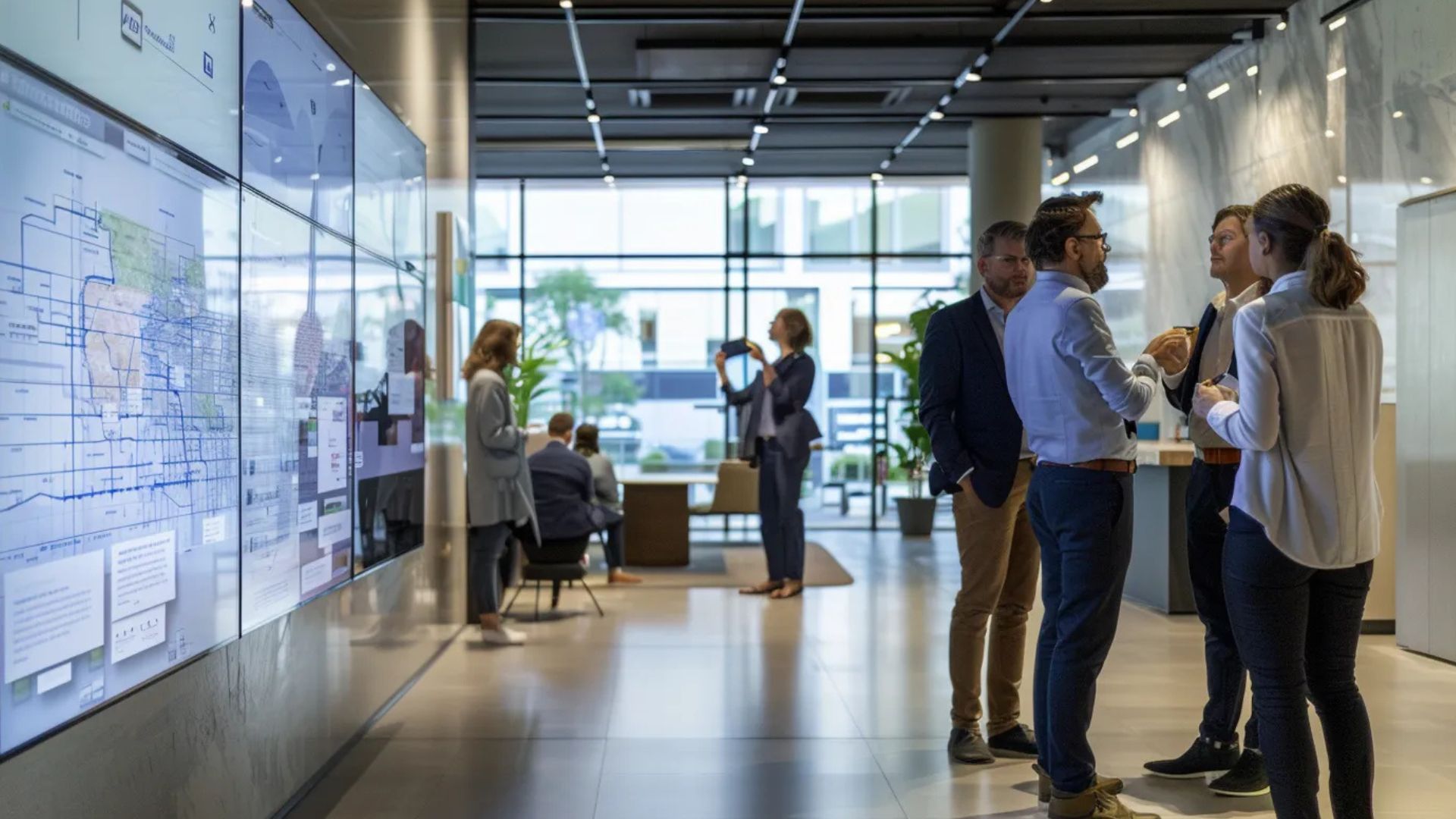Office Move Best Practices You Need to Know
Office Move Best Practices You Need to Know: Comprehensive Guide to Planning and Executing a Successful Office Relocation

Moving an entire office can disrupt operations, strain budgets, and challenge employee morale—but with proven best practices for commercial office moves, you can transform relocation into a seamless transition.
In this guide, we'll map out essential planning steps, budgeting strategies, logistics execution, employee communication, post-move optimization, specialized considerations, and tips for selecting the ideal commercial moving company.
By following these steps, your business continuity remains intact, downtime is minimized, and productivity accelerates from day one.
What Are the Essential Steps in an Office Relocation Checklist?
An office relocation checklist defines every phase—from initial assessment through post-move wrap-up—ensuring nothing is overlooked, streamlining coordination, and reducing errors that cause costly delays. A structured checklist drives accountability among stakeholders and establishes clear milestones for each relocation phase.
Before diving into details, here is a high-level overview of key phases:
- Assessment & Approval
- Team Formation & Timeline Creation
- Space Planning & Lease Review
- Inventory & Packing Preparations
- Logistics Coordination & Move Execution
- Post-Move Inspection & Setup
How Do You Create a Detailed Office Move Timeline?

A move timeline outlines critical deadlines, assigns responsibilities, and aligns interdependent tasks to guarantee a smooth transition. Starting 6–12 months prior, it should break down into quarterly, monthly, and weekly checkpoints that ensure readiness at every stage.
- 6–12 Months Out: Conduct site assessments, finalize budget approvals, and negotiate lease terms.
- 3–6 Months Out: Form a project team, develop floor plans for the new space, and draft detailed schedules.
- 1–3 Months Out: Begin packing nonessential areas, secure moving supplies, and confirm vendor contracts.
- 2–4 Weeks Out: Label boxes by department, schedule IT shutdown/restart windows, and notify service providers.
- Move Week: Supervise loading/unloading, verify inventory on arrival, and schedule furniture reassembly.
- Post-Move (1–2 Weeks): Address punch-list issues, confirm system functionality, and hold a debrief session.
Research indicates that a well-defined project team and a detailed timeline are crucial for a smooth office move, minimizing downtime and ensuring business continuity. Proper planning, including lease review and space selection, can prevent unforeseen costs and maximize operational efficiency.
What Should Be Included in a Commercial Moving Checklist?
A commercial moving checklist compiles every logistical and administrative requirement into a unified reference document, safeguarding assets and ensuring compliance. The three primary categories are:
- Administrative Tasks: Lease termination/activation, insurance updates, vendor notifications, and permits.
- Asset Management: Detailed inventory of furniture, IT hardware, and sensitive equipment, plus depreciation documentation.
Service Coordination: Schedule professional movers, IT specialists, security system installers, and cleaning crews.
| Category | Key Task | Benefit |
|---|---|---|
| Administrative | Review new lease obligations | Avoids hidden fees and delays |
| Asset Management | Tag and photograph equipment | Prevents loss and simplifies claims |
| Service Coordination | Book certified commercial movers | Ensures specialized handling |
This table clarifies responsibilities, linking each task to its outcome and preparing your team for efficient execution.
How Do You Form an Effective Office Move Project Team?
An office move project team centralizes decision-making and enhances accountability, combining expertise in operations, IT, facilities, and HR. Appoint a dedicated Move Manager who oversees planning, communication, and vendor coordination, supported by:
- IT Lead: Manages infrastructure audits, data backup plans, and network reconfiguration.
- Facilities Coordinator: Oversees space planning, furniture layouts, and compliance with building codes.
- HR Representative: Communicates schedules, manages employee concerns, and organizes orientation sessions.
- Finance Analyst: Tracks budget adherence, approves expenditures, and forecasts cost variances.
Distributing roles according to expertise accelerates the resolution of move-related challenges and reinforces cross-department alignment.
Why Is Lease Review and New Space Selection Critical Before Moving?
Reviewing current lease terms and selecting an optimal new space prevents unforeseen obligations, maximizes operational efficiency, and ensures long-term cost savings. Key considerations include:
- Renewal vs. Termination Penalties: Understanding financial liabilities tied to early lease breaks.
- Zoning & Accessibility: Confirming compliance with local codes and employee commute patterns.
- Infrastructure Readiness: Verifying power capacity, network connectivity, and security requirements.
- Expansion Flexibility: Securing options for future growth or downsizing in response to hybrid work trends.
Thorough lease analysis and strategic space selection establish a foundation for seamless relocation and sustainable business growth.
How Can You Plan and Budget Effectively for a Commercial Office Move?
Effective planning and budgeting define the financial framework for a relocation, aligning projected costs with organizational goals while preserving service quality. By mapping expenses early and leveraging professional commercial moving services, businesses can avoid budget overruns and maintain continuity.
What Are the Key Budgeting Considerations for Corporate Relocation?
- Direct Costs: Moving company fees, packing materials, IT disconnection/reinstallation, and cleaning services.
- Indirect Costs: Employee downtime, overtime, temporary storage, and emergency repairs.
- Contingency Fund: Reserve 10–15% of the total budget for unexpected expenses like elevator downtime or last-minute schedule changes.
A detailed budget spreadsheet helps you allocate funds accurately and track real-time spending against estimates.
How Do You Minimize Costs Without Sacrificing Quality?
- Flexible Scheduling: Off-peak or weekend moves often incur lower labor rates and reduced building fees.
- Volume Discounts: Consolidate shipments and leverage full-truck loads to lower per-unit moving costs.
- Reusable Packing Supplies: Invest in sturdy crates and containers that can be returned or repurposed.
- Cross-Training Staff: Have internal teams handle furniture disassembly or basic packing under professional guidance.
Balancing cost-efficiency with service reliability safeguards asset integrity and accelerates operational readiness.
What Role Does a Moving Company Play in Budget Management?
A seasoned moving company serves as both executor and financial advisor, offering:
- Transparent Quotations: Detailed line-item estimates that separate labor, materials, and specialty services.
- Project Planning Tools: Digital dashboards for real-time cost tracking and milestone monitoring.
- Risk Mitigation Insurance: Coverage options that protect against property damage and loss during transit.
- Post-Move Audits: Final expense reconciliation and recommendations for process improvements.
Partnering with a full-service commercial moving provider ensures predictable budgeting and expert handling of complex logistics.
What Are the Best Practices for Logistics and Execution During an Office Move?
Logistics and execution translate plans into action, requiring meticulous coordination of people, equipment, and timelines. Adhering to these best practices dramatically reduces errors and preserves business continuity.
How Do Professional Commercial Moving Services Ensure a Smooth Move?
Commercial movers bring specialized skills and equipment to manage the intricacies of office relocations:
- Customized Move Plans: Tailored strategies that align with your facility constraints and operational cadence.
- Specialized Packing Techniques: Use of anti-static crates for electronics, heavy-duty dollies for modular furniture, and climate-controlled transport for sensitive equipment.
- Certified Personnel: Trained crews overseen by Move Supervisors who enforce safety and quality standards.
- Integrated IT Coordination: Seamless handoffs between movers and IT technicians to minimize network downtime.
By entrusting critical logistics to experienced professionals, organizations benefit from predictable execution and reduced risk.
What Are Effective Packing and Labeling Strategies for Office Equipment?
| Item Category | Packing Method | Labeling Standard |
|---|---|---|
| Desktops & Laptops | Anti-static bubble wrap, padded boxes | Dept–AssetID–"Fragile" |
| Cables & Peripherals | Zip-tied, tagged, and bagged | Color-coded tags by department |
| Furniture Pieces | Corner protectors, shrink wrap | Numbered tags with floor plan |
A consistent labeling convention ensures every box is traceable to its final position, reducing handling errors and simplifying unpacking.
How Should IT Relocation Be Planned and Executed to Avoid Downtime?
IT relocation hinges on precise sequencing, robust backups, and accelerated testing:
- Infrastructure Audit: Document current network topology, server configurations, and power requirements.
- Data Backup & Validation: Perform full backups and verify restore processes before disconnection.
- Staggered Shutdown/Startup: Schedule phased equipment shutdowns and sequential reboots at the new site.
- Connectivity Testing: Conduct end-to-end network and application tests before employee access resumes.
Layering these steps around the master timeline prevents data loss and restores productivity rapidly.
What Are the Best Methods for Furniture Disassembly and Reassembly?
Efficient furniture handling involves standardized processes and modular planning:
- Component Tagging: Label each part with joiner codes that match the floor plan diagram.
- Tool Kit Standardization: Use kits with universal screwdrivers, Allen wrenches, and power tools pre-assigned to each crew.
- Staging Zones: Set up designated areas for disassembled components to prevent mix-ups.
- Assembly Verification: Inspect reassembled units against checklists to confirm structural integrity and finish quality.
Following these methods accelerates workspace readiness and ensures ergonomic setups.
How Do You Manage Employee Communication and Support During an Office Move?

Transparent communication and empathetic support reduce employee anxiety, maintain morale, and preserve productivity. A proactive engagement plan transforms relocation into an opportunity for team building and process improvement.
What Is an Effective Employee Communication Plan for Office Relocation?
A robust communication plan outlines frequency, channels, and content for all stakeholders:
- Kickoff Meeting: Introduce relocation rationale, timeline overview, and key contacts.
- Weekly Updates: Use email bulletins and intranet posts to highlight progress, upcoming actions, and FAQs.
- Departmental Briefings: Conduct small-group sessions to address specific team needs and schedule adjustments.
- Feedback Mechanisms: Provide surveys or suggestion boxes to surface concerns and refine processes.
Regular, structured updates foster trust and keep everyone aligned on next steps.
How Can HR Best Practices Support Employees During the Move?
Human resources can mitigate disruption by addressing logistics, training, and well-being:
- Relocation Assistance Packages: Offer stipends for travel, parking, and temporary accommodation if needed.
- Onboarding Sessions: Host guided tours of the new office layout and technology orientation workshops.
- Flexible Scheduling: Allow remote work or adjusted hours during peak packing and setup periods.
- Wellness Resources: Provide stress-management workshops and communal areas for breaks during the move.
Studies show that a proactive communication plan and HR support, including relocation assistance and flexible scheduling, can significantly reduce employee stress and maintain productivity during an office move. This approach fosters trust and keeps employees aligned with the relocation process.
How Do You Minimize Employee Downtime and Maintain Productivity?
Balancing move activities with core operations requires tactical scheduling and resource allocation:
- Staggered Relocation Waves: Shift teams in phases so critical functions remain continuously staffed.
- Temporary Workspaces: Reserve off-site conference rooms or coworking spaces for uninterrupted collaboration.
- Mobile Technology Kits: Equip employees with portable devices and connectivity to work during transit.
- Post-Move Performance Check-Ins: Schedule team huddles to address workflow challenges and reassign priorities.
This layered approach preserves service levels and accelerates the return to full operational capacity.
What Are the Key Post-Move Steps to Settle and Optimize Your New Office Space?
Post-move activities solidify gains from careful planning, ensuring all systems perform correctly, employees feel comfortable, and the space supports productivity goals. Addressing these steps early avoids hidden inefficiencies.
How Do You Verify IT Systems and Infrastructure After Moving?
System verification confirms that network, hardware, and applications function as intended:
- Connectivity Audits: Test wired and wireless network access in every zone and conference room.
- Server & Storage Checks: Validate server rack mounting, cooling performance, and backup integrity.
- Peripheral Function Tests: Confirm printers, scanners, and VoIP phones operate without disruption.
- Security System Validation: Ensure cameras, access controls, and alarm systems are fully operational.
Completing these checks before full staff occupancy prevents workflow interruptions and data compromise.
What Are the Best Practices for Settling Into a New Office Environment?
Settling into a new workspace requires attention to ergonomics, culture, and process optimization:
- Ergonomic Assessments: Adjust desks, chairs, and monitor heights to support employee well-being.
- Orientation Walkthroughs: Conduct guided tours highlighting amenities, safety exits, and collaboration zones.
- Feedback Forums: Host drop-in sessions where employees can share setup concerns and improvement ideas.
- Visual Wayfinding: Use clear signage and floor decals to direct foot traffic and streamline navigation.
Creating a welcoming environment accelerates team cohesion and office familiarity.
How Can You Optimize Office Layout for Enhanced Productivity?
| Zone Type | Purpose | Design Feature |
|---|---|---|
| Collaboration | Brainstorming & team meetings | Modular furniture, writable walls |
| Focus Areas | Solo tasks & confidential work | Privacy pods, acoustic panels |
| Social Hubs | Breaks & informal chats | Lounge seating, coffee stations |
Why Is Updating Business Information Important After an Office Move?
Updating business information preserves brand consistency and regulatory compliance:
- Postal & Shipping Addresses: Notify vendors, update stationery, and revise shipping portals.
- Online Listings & Directories: Edit Google Business Profile, Yelp, and industry portals to reflect the new location.
- Regulatory Filings: Amend business licenses, tax registrations, and insurance policies.
- Client & Partner Notifications: Send formal announcements to stakeholders and include relocation details in newsletters.
Proactive updates eliminate communication breakdowns and maintain external trust in your operations.
What Specialized Considerations Should You Know for Office Moves?
Certain factors—like sustainability goals, specialized equipment, and evolving work models—require targeted strategies to ensure a future-proof relocation that aligns with corporate values and long-term productivity.
How Can You Implement Eco-Friendly and Sustainable Office Moving Strategies?
Green relocations reduce environmental impact and often lower travel and disposal costs:
- Recyclable Packing Materials: Use biodegradable boxes and recycled packing peanuts.
- Donate or Resell Surplus Assets: Partner with local charities for furniture donations and e-waste recycling.
- Carbon-Offset Programs: Collaborate with moving providers offering carbon-neutral transport options.
- Energy-Efficient Upgrades: Install LED lighting and smart thermostats during move-in to enhance sustainability.
These measures demonstrate corporate responsibility and can yield cost savings through resource recovery.
What Are the Best Practices for Moving Specialized Office Equipment?
Delicate or high-value equipment demands extra care to prevent damage and downtime:
- Custom Crating & Shock-Absorbing Pallets: Protect servers, lab instruments, and AV systems.
- Climate-Controlled Transport: Maintain temperature and humidity levels for sensitive hardware.
- Manufacturer Coordination: Engage OEM-certified technicians for disassembly, wiring, and recalibration.
- Insurance Coverage Verification: Secure specialized policies for high-value assets.
By following these protocols, businesses safeguard critical technology and ensure immediate usability upon arrival.
How Do Hybrid Work Models Affect Office Relocation Planning?
As hybrid work arrangements grow, relocation strategies must incorporate flexibility and agility:
- Space Utilization Analysis: Right-size real estate based on desk-sharing ratios and remote attendance forecasts.
- Technology Investments: Enable robust videoconferencing, secure remote access, and mobile device management.
- Hoteling Systems: Implement desk-reservation software to optimize workspace occupancy.
- Flex Zones: Design multipurpose areas that accommodate both collaborative sessions and virtual meetings.
Acknowledging hybrid workflows during planning maximizes real estate ROI and supports workforce adaptability.
How Do You Choose the Right Commercial Moving Company for Your Office Relocation?
Selecting a commercial mover with the right expertise, credentials, and resources is crucial to executing a risk-managed, efficient relocation that protects assets and maintains operations.
What Qualifications and Services Should You Look for in Commercial Movers?
A qualified commercial mover demonstrates:
- Certifications & Insurance: Valid mover licenses, liability coverage, and cargo insurance.
- Industry Experience: Proven track record with similar-sized office relocations in your sector.
- Comprehensive Services: Inclusion of packing, storage, IT coordination, and post-move support.
- Client References & Reviews: Positive testimonials highlighting professionalism and on-time performance.
How Do Customized Move Plans Benefit Your Business Relocation?
| Plan Component | Customization Aspect | Business Advantage |
|---|---|---|
| Move Sequence | Phased team relocations | Continuous operations |
| Packing Protocols | Department-specific packing guidelines | Asset protection and traceability |
| Schedule Alignment | Holidays/peak periods avoidance | Lower costs and reduced conflicts |
Customized plans reflect an in-depth understanding of your workflow and offer scalable solutions as needs evolve.
Why Is Minimizing Downtime a Critical Factor When Hiring Movers?
Minimizing downtime preserves revenue streams, sustains client satisfaction, and protects employee productivity:
- Rapid Turnaround Guarantees: Movers committed to defined service windows accelerate setup and testing.
- Contingency Staffing: Backup crews on standby to handle unexpected delays or equipment issues.
- 24/7 Support Options: After-hours coordination reduces impact on core business hours.
- Performance Metrics: Service-level agreements tied to penalties for missed deadlines ensure accountability.
Downtime mitigation elevates your relocation from a logistical exercise to a strategic business enabler.
The path to a successful commercial office move lies in meticulous planning, strategic budgeting, expert logistics execution, empathetic employee communication, and informed partner selection. By applying these best practices for commercial office moves, organizations can not only protect critical assets but also accelerate operational readiness in a new environment.
Effective relocation transforms risk into opportunity, establishing a foundation for sustained growth and productivity.










